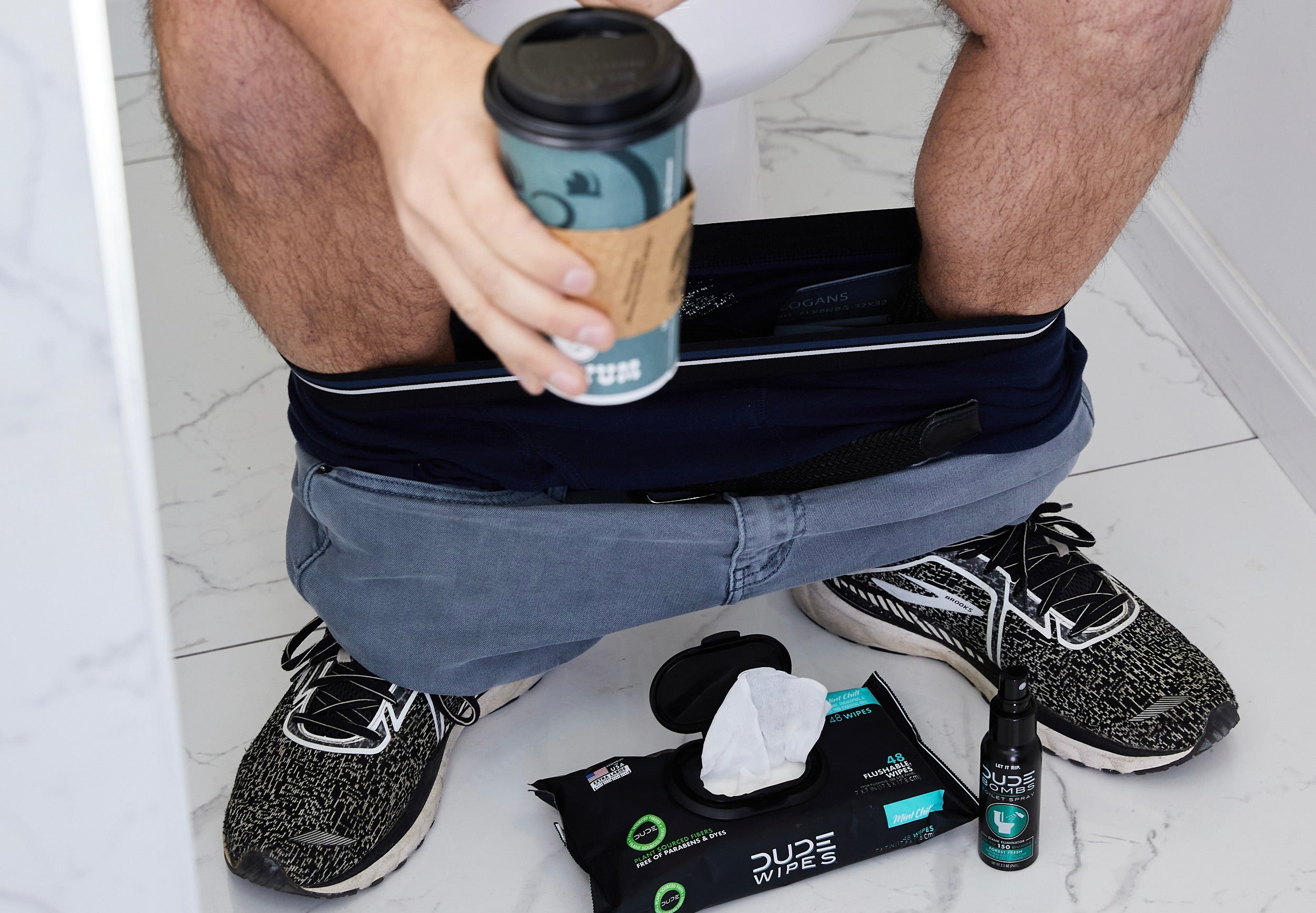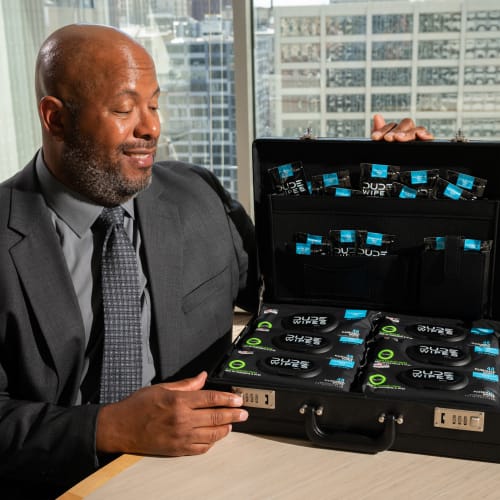When you have tummy trouble, it can be hard to know whether to blame your lunch or a serious health condition. A lot of gut probs are temporary, but if you’re reading this, chances are you’re worried about Crohn’s disease: a type of inflammatory bowel disease (IBD) that irritates your digestive tract.
The most common symptoms of Crohn’s disease are cramping, diarrhea, and abdominal pain. You can experience all of those after Taco Tuesday, so how do you know what’s going on?
Spoiler alert: there isn’t a special test to confirm a Crohn’s diagnosis. Your healthcare provider will likely run a bunch of tests to rule out other gastrointestinal issues like ulcerative colitis.
We’re obviously not doctors, we’re just DUDES. But we’re tight with the IBD community, so we wanted to raise awareness for this condition and put you on the path to get the treatment you (might need). That’s why we partnered with the Crohn’s & Colitis Foundation to serve up the latest and greatest info here on the DUDE Blog.
Let’s jump in.
How Is Crohn’s Disease Diagnosed?
Crohn’s disease is one of the trickiest health conditions to diagnose. There is no single test for the diagnosis of Crohn’s disease. Instead, a gastroenterologist will use a combination of diagnostic tests and physical exams to rule out similar issues.
Here are 7 common tests your doctor may perform—and what to expect.
Blood Test
If your red blood cell count is low, you may have anemia which is a risk factor for Crohn’s disease. If your white blood cell count is high, that could indicate inflammation or an infection.
Stool Test
Your poop says a lot about your health. Doctors may ask for a stool sample to check for bacteria, parasites, and infections. Curious about Crohn’s disease poop? Read our complete guide.
Colonoscopy
Many guys cringe when they see the word “colonoscopy,” but it’s one of the best diagnostic procedures you can get. A doctor will use a narrow, flexible tube called a colonoscope to check out your rectum, colon, and ileum for signs of inflammation.
Pro tip: Check out our colonoscopy prep guide to make the process as smooth as possible.
Upper Gastrointestinal (GI) Endoscopy:
During an upper endoscopy, your doctor inserts a thin tube with a tiny camera (the endoscope) into your throat to examine your upper GI tract. There’s also another variation called a capsule endoscopy, where you swallow a tiny camera that takes pictures as it moves through your gastrointestinal tract. High tech, huh?
Upper Gastrointestinal (GI) X-Ray:
This is a bit different from X-rays you’d get for a broken bone. During a GI exam, you might swallow a chalky liquid called barium, which the doctor watches via X-ray images to see what’s going on in your digestive tract.
Computerized Tomography (CT Scan)
This imaging test uses a combination of X-ray and computer technology to create a super-detailed picture of your bowel and digestive tract. You may have to swallow a special liquid or get an injection of a dye so the doctor can see your insides more easily.
Enteroscopy
During this test, a doctor uses a scope with a device called an overtube to see deep into your small intestine. This technique is often used when an endoscopy shows signs of Crohn’s disease, but your doctor wants a closer look.
Common Signs of Crohn’s Disease
Before you call your doc and schedule a bunch of tests, you might be wondering whether your symptoms check the boxes for Crohn’s disease. For starters, it’s worth noting that Crohn’s disease is rare: only about 500,000 Americans have it, according to Cleveland Clinic.
You may be at higher risk if you have a family history of Crohn’s disease. Smoking cigarettes can also raise your risk. Crohn’s disease can affects people of all ages, but it usually appears in their 20s or 30s.
Common symptoms of Crohn’s disease include:
- Stomach pain
- Loose bowel movements
- Loss of appetite
- Weight loss
- Anal fissures
- Anal fistulas
- Bloody stool
People with Crohn’s disease often experience “flare ups” where the symptoms are severe, followed by weeks of absent or mild symptoms.
DUDE Nation Has Your Back (and Butt)
We’ve wiped billions of butts since we launched DUDE Wipes in our apartment. But we’ve got a special place in our hearts for folks dealing with IBD. As the Crohn’s & Colitis Foundation points out, wiping with dry toilet paper can do serious damage if you’re going to the bathroom multiple times a day.
That’s where DUDE Wipes come in handy: these flushable wipes are up to 35% bigger than baby wipes, plus they’re infused with vitamin E and aloe to soothe your sensitive sides.
Crohn’s disease is tough to deal with on its own—don’t let TP worsen your bathroom blues.









Leave a comment
This site is protected by reCAPTCHA and the Google Privacy Policy and Terms of Service apply.